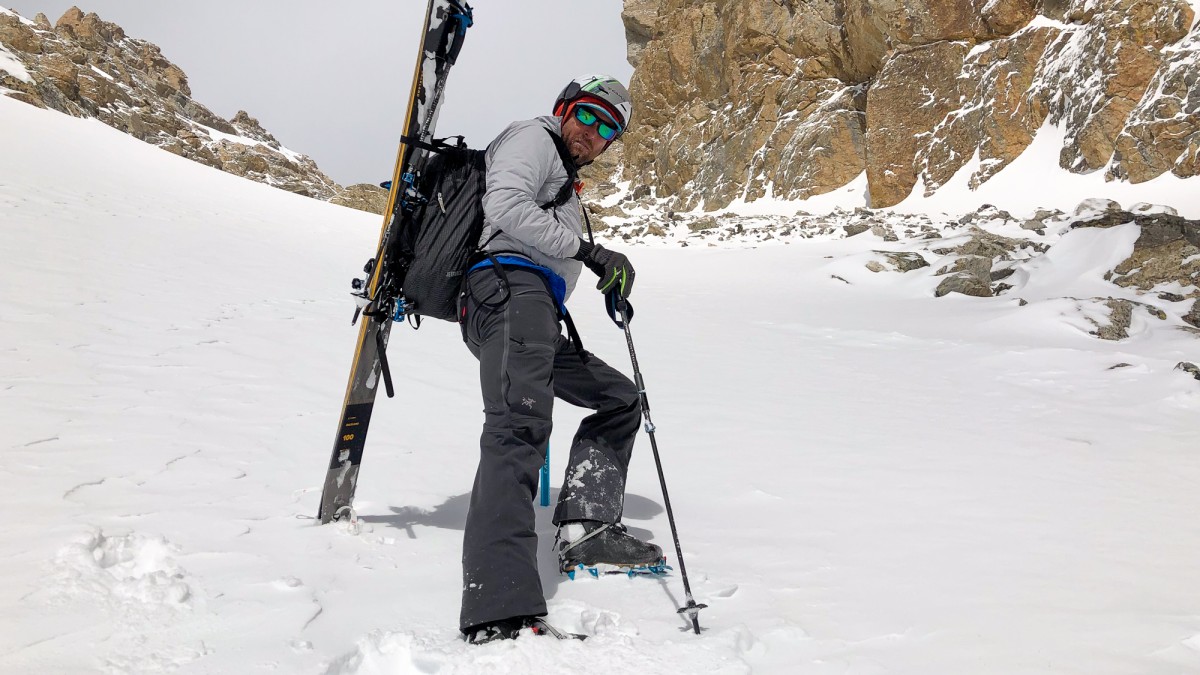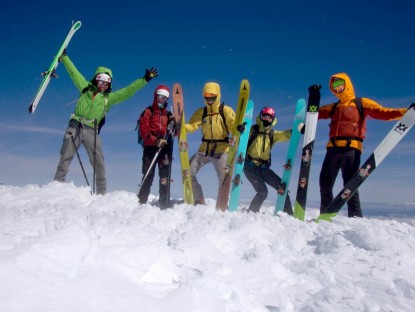Our Verdict
Our Analysis and Test Results
The Atomic Backland 100 is an excellently boring ski. We use the “boring” qualifier most sincerely and positively. There is little to nothing about them that stands out to our testers. In every scenario we exposed them to – and we exposed them to a wide variety of situations – our testers were able to entirely forget about the skis themselves and enjoy the experience and their surroundings. It is an odd sort of praise, but the Backland 100 earns its award for being utterly forgettable.
Performance Comparison
Weight
The two tested Atomic Backland 100 skis weigh 1338 and 1323 grams, respectively. A minor discrepancy like this is common and understandable. The average weight, then, is 1331 grams. That makes 2661 grams, or 5.9 pounds, for the pair. Even here in the USA, the convention for discussing backcountry skis is to discuss the weight of one ski in grams. After running these quick conversions for you, we will stick to that convention from here on out.
1300-gram skis like the Backland 100 are smack in the middle of what we consider the optimum range for all-around, human-powered skiing. All of the skis we have most highly rated for the last half decade or so have weighed 1200-1400 grams. Given current technological limitations and perhaps inherent physical parameters – that more mass directly lends itself to increased downhill performance – this weight point is what we consider to be ideal. Go heavier and downhill performance definitely improves, but that improvement is minor when pitted against the more significant cost of uphill efficiency. Similarly, going in the other direction yields enhanced uphill efficiency, but ski performance rapidly declines.
Firm Snow
You might not think that you are going to the backcountry to ski firm snow. But you will indeed ski firm snow in the backcountry. Corn snow is amazing, and yet, it is still a firm type of snow. The effects of wind on high-altitude ski mountaineering terrain generally yield firm conditions as well. Whatever the source or flavor, the Atomic Backland 100 delivers a solid performance on solid snow. After only a trial run or two, we didn't hesitate to take these skis into serious conditions, knowing that they would perform well.
When the snow gets hard, their edges grip evenly and firmly. When we encountered hard chunks of snow, the ski deflected a bit – as to be expected of a lightweight ski – but not too much. Our assessment of their hard-snow prowess in the backcountry was confirmed when we had the opportunity to take the Backland 100 inbounds to cut up groomers and “skied off” firm snow. For too many reasons to discuss here, we wouldn't opt for these skis inbounds, but we were glad to get some additional mileage to back up our initial findings.
Powder
We love powder skiing, and the Backland 100 does too. In our experience, skis with these dimensions reward short-radius rhythmic turns in the deep snow. This ski isn't alone in that regard. But one tester emphasized, months later, how a descent of amazing, bottomless powder snow in the Tetons' classic “Red Sentinel Couloir” was made that much better by skiing the Backland 100.
We look for balanced float, fore and aft, and for overall stability. We also look for the right amount of snow immersion relative to the dimensions. In this middle-size range of around 100 mm underfoot, we have enough testing experience to differentiate degrees of float between skis, and some 100 mm-waisted skis sink deeper than others. Sinking into powder isn't necessarily a bad thing, but we want to be in control of that action. The Backland 100 offers excellent control – we were able to ski “light” and stay near the surface just as easily as we were able to pop from one turn to the next for a more “three-dimensional” powder ski experience.
Crud and Poor Snow
We want to seek out the worst snow conditions. For you, for us, and for these skis. The Backland 100 received a fair dose of what we would call bad snow. Breakable melt-freeze crusts on lower-elevation, sunny slopes in March; alternating wind crusts and soft pockets of snow of a high-altitude descent of the south side of the South Teton; and a handful of more mellow runs throughout the season that involved tough snow of one one sort or another.
Skis with dimensions and weight similar to the Backland 100 can do really well or really poorly in this realm. This award-winning Atomic is in the upper echelon of its weight class. In all of our testing, this ski performs well if you're faced with poor snow conditions, just as long as you keep your speed in check.
Stability at Speed
Over the spectrum of ski speeds – from Olympic downhill to beginner snowplowing – backcountry skiing is closer to the slow end. High-speed skiing in the backcountry is high-consequence skiing. We're not pushing World Cup downhill speeds, so when we talk about stability within the context of backcountry skiing, we're talking about responsible speeds. Considering that context, the Backland 100 does okay.
You certainly don't pick these for skiing at maximum speed. Straight-lining that 800-foot powder bowl will elicit squirrelly performance and speed wobbles. Within a responsible speed limit for skiing couloirs or tight trees, noodled powder turns, and smearing corn, the Backland 100 keeps up as well as or better than other similar offerings. You likely need to add hundreds of grams to each ski to (potentially) find better high-tempo confidence in your backcountry skis. And who wants to do that?
Should you buy the Atomic Backland 100?
We think so. If all you do is look at our awards designation, you wouldn't be wrong to end up with the Atomic Backland 100. It is optimized for self-propelled, all-season, all-terrain backcountry skiing. Pair it with appropriately suitable boots and bindings, and you will have a set-up that will ski the Haute Route, the Grand Teton, Japow, that Canadian hut trip, or many thousands of less prominent objectives.
What Other Backcountry Skis Should You Consider?
In this class of skis, you have to consider a few products with similar stats. For all-around ski touring, consider products between 1200 and 1400 grams and around 95-105 mm underfoot. In these ranges, we also like the Backland 100, and the Dynastar M-Tour 99 F Team, which handles soft snow better. Tack on many more grams, and you end up with a ski like the Blizzard Zero G 105. It skis better, but you pay for that on the uphill – ain't nothing free, as they say.











